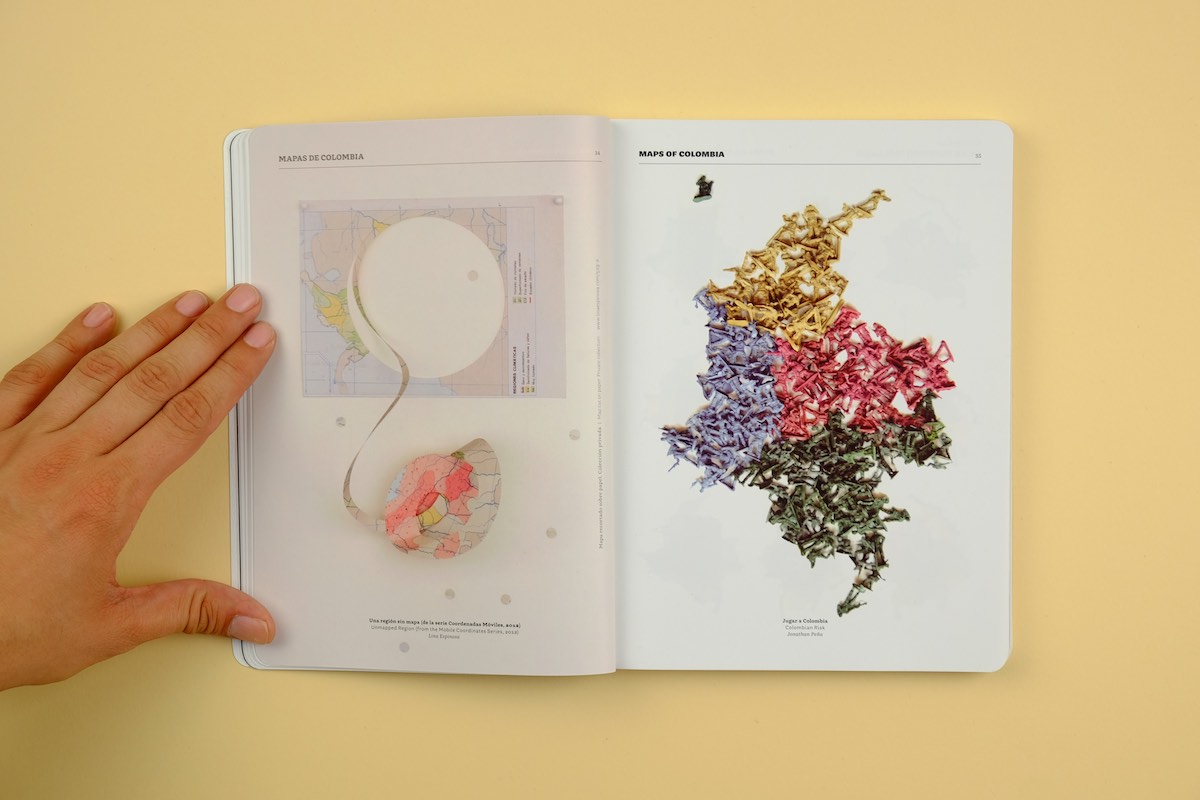(Excerpt taken from Foreword, pgs.6 & 7)
«A map is a coded and compacted version of reality, created by simplifying many layers of information. This reduction requires making multiples choices in the context of a territory shown, about what to include and what to leave out. Each one of these choices is as political as it is subjective. As such, a map is necessarily an incomplete and biased representation of reality: the Subjective Atlas of Colombia is no exception.
We believe that the only way to capture a picture of contemporary Colombian society is from the inside. The people of Colombia are its best possible cartographers. It’s the citizens who have the personal understanding and experiences of a place. Their personal points of view reveal insights into what it means to live in Colombia today and what global developments mean on a local level. That is where ‘geo-poetry’ starts to be written, and that is how this atlas came into being.
We asked more than sixty artists, designers and other keen observers in Colombia to bring their country into perspective. We worked with diverse groups of individuals during workshops in both Bogotá and Puerto Colombia. Together we researched current notions around Colombia’s identity drawn from personal memories, impulses and dreams. We discussed what kind of visual symbols should be adopted and found a common ground that helped us to identify key local discussions around the concepts of self-exoticisation and post-colonialism. During the workshops we explored how the participants connected emotionally with their domestic environment and with public space, and how their perceptions of Colombia’s vernacular heritage were reshaped by forces of globalisation.
We observed how the subjects of the work of Colombian artists’ are shifting rapidly past political irony and unmediated criticism of the state. There is less desire to portray violence and armed conflict. Instead, the works in this atlas are an attempt to capture something of the essence and soul of places inhabited and appropriated by Colombians.
Looking at all works together they form an unwitting autobiography of the tastes, values, aspirations and fears of Colombia today. They reveal how Colombian cultural identity finds itself at a crossroads, pivoting between the desire for sociopolitical engagement and poetic escape. The Subjective Atlas of Colombia grasps these processes of change, and offers the viewer the possibility of de-coding reality.
As such this publication can be seen as a form of contemporary historical memory; tracing what gets erased and what comes to replace it. The many contributions to this document touch the fabric of society in different ways, shifting our perceptions so that we get clear glimpses of the foundations beneath. In this way this book can be used as a collective tool that unsettles and challenges social, political, cultural and economic ideas and prejudices. It has become a catalogue of fresh ideas and opportunities, demonstrating how creative practitioners are critical to opening up new ways of seeing and thinking. It’s this talent and open mentality that can uncover and forge new ways to resolve conflict, or create change, which can lead to more a conscious and peaceful society.»
—Hugo Herrera Tobón, Moniek Driesse & Annelys de Vet.













































